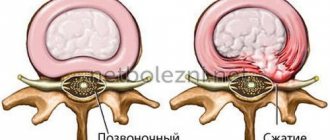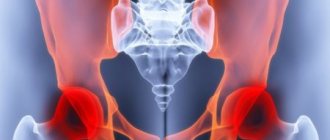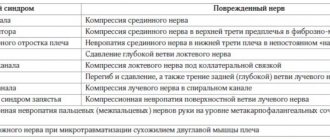Reiter's disease is named after the German physician Hans Reiter, who in 1916 described the clinical picture of a strange illness that included 3 symptoms: urethritis, arthritis and conjunctivitis.
disease or syndrome is a fairly rare disease that has become widespread due to the intensification of international tourism and, as a consequence, an increase in the risk of infectious diseases, including sexually transmitted diseases. This is a complex disease in which the organs of the genitourinary system, joints and eyes are simultaneously or sequentially affected. This disease is primarily the responsibility of a rheumatologist, but also of related specialists - urologists, gynecologists and ophthalmologists.
1
Consultation with a urologist for Reiter's disease
2 Consultation with a gynecologist for Reiter’s disease
3 Consultation with an ophthalmologist for Reiter’s disease
Causes of the disease
According to statistics, this syndrome most often affects representatives of the stronger sex; Reiter's disease in men (mostly aged 20-40 years) occurs in 80% of cases. Reiter's disease develops much less frequently in women; in isolated cases, children become infected.
It is assumed that one of the main factors of the disease is sexually transmitted infections. Most often, the causative agent is chlamydia, a microorganism 250-300 nm in size that can exist in the human body for a long time. In a life-threatening situation for the microorganism, chlamydia can transform into the L-form, which is more resistant to external influences and has the ability to be parasitized for a long time. All this contributes to the chronic course of the disease.
Reiter's disease can also be preceded by an acute intestinal infection, such as salmonellosis or dysentery. There are known cases of Reiter's disease caused by pathogenic flora that enters the human body through food intake or the respiratory route.
Hereditary predisposition plays a major role in the development of Reiter's syndrome. Improper immune activity is inherited from parents. Under appropriate, unfavorable conditions, the immune system begins to direct its forces to the cells of its own body.
In this regard, cases of the development of the disease due to sexually transmitted infection and after the patient has suffered infectious enterocolitis are usually separated.
How can you become infected with chlamydia: once is enough
The widespread distribution of the disease is explained by the fact that its symptoms are often not pronounced, and the patient may not be aware of the presence of chlamydia for a long time.
Sexual route: vaginal, anal and oral
! Chlamydia is a sexually transmitted disease and can therefore be contracted during unprotected vaginal or anal intercourse. There is a possibility of transmission of chlamydia through oral sex, which increases significantly in the presence of damage to the mucous membranes.
Is it possible to become infected with chlamydia if “it only happened once”? Clinical studies show that transmission of chlamydia occurs in 30-50% of cases of unprotected sexual contact, if sexual intercourse with an infected partner occurs no more than once. When chlamydia is detected in a person, it is imperative to check a regular sexual partner, since the risk of infection with regularly repeated sexual intercourse is almost 100%.
During childbirth
. There is a high risk of transmitting chlamydia from mother to child during childbirth, when the newborn passes through the birth canal. In this case, infection of the eyes and mouth occurs.
Household way
. In the external environment, the parasite can remain viable for 2 days, but it is sensitive to temperature conditions, surviving only at temperatures from 16 to 22 degrees. Therefore, there is a risk of household infection through dirty dishes, toilet seats, etc. is low, however, cases of infection through this route have also been observed. Including a small percentage of infections occurs due to the transmission of bacteria when visiting a bathhouse or sauna, since in the humid and cool environment of the dressing room, chlamydia feels “at home.”
What happens during Reiter's disease?
As a result of sexual infection in the genitourinary organs (urethra, prostate, cervical canal of the uterus), a focus of chronic inflammation is formed, which acts as a trigger for further inflammation in the joint tissues or organ of vision.
After some time, a cross-immune reaction appears, the severity of which determines the nature of the course of the disease.
There are 2 stages of the disease: the first is infectious, characterized by corresponding signs of damage to the genitourinary or gastrointestinal tract. The second is immunopathological, accompanied by the development of immune-mediated pathology with damage to the joints and conjunctiva of the eye.
Sources
- Ehtesham N., Alani B., Mortazavi D., Azhdari S., Kenarangi T., Esmaeilzadeh E., Pakzad B. Association of rs3135500 and rs3135499 Polymorphisms in the MicroRNA-binding Site of Nucleotide-binding Oligomerization Domain 2 (NOD2) Gene with Susceptibility to Rheumatoid Arthritis. // Iran J Allergy Asthma Immunol - 2021 - Vol20 - N2 - p.178-187; PMID:33904676
- Hoffmann JHO., Knoop C., Schäkel K., Enk AH., Hadaschik EN. Evaluation of Psoriasis Area and Severity Index as a Proxy for Bio-markers of Systemic Disease under Treatment with Tumor Necrosis Factor-alpha and Interleukin 12/23 Antagonists in Patients with Psoriasis: a Retrospective Cohort Study of 186 Treatment Cycles. // Acta Derm Venereol - 2021 - Vol - NNULL - p.; PMID:33903917
- Naylor BH., Seidman D., Scuderi GR. Bridging the Gap: The Influence of Foot and Ankle Pathomechanics in Total Knee Arthroplasty. // J Am Acad Orthop Surg - 2021 - Vol - NNULL - p.; PMID:33902070
- Liu W., Xie G., Yuan G., Xie D., Lian Z., Lin Z., Ye J., Zhou W., Zhou W., Li H., Wang X., Feng H., Liu Y ., Yao G. 6′-O-Galloylpaeoniflorin Attenuates Osteoclasto-genesis and Relieves Ovariectomy-Induced Osteoporosis by Inhibiting Reactive Oxygen Species and MAPKs/c-Fos/NFATc1 Signaling Pathway. // Front Pharmacol - 2021 - Vol12 - NNULL - p.641277; PMID:33897430
- Schnappauf O., Heale L., Dissanayake D., Tsai WL., Gadina M., Leto TL., Kastner DL., Malech HL., Kuhns DB., Aksentijevich I., Laxer RM. Homozygous variant p. Arg90His in NCF1 is associated with early-onset Interferonopathy: a case report. // Pediatr Rheumatol Online J - 2021 - Vol19 - N1 - p.54; PMID:33892719
- Kondo Y., Kaneko Y., Takei H., Tamai H., Kabata H., Suhara T., Yamamoto R., Nagata H., Ishii M., Sasaki J., Hasegawa N., Fukunaga K., Takeuchi T COVID-19 shares clinical features with anti-melanoma differentiation-associated protein 5 positive dermatomyositis and adult Still's disease. // Clin Exp Rheumatol - 2021 - Vol - NNULL - p.; PMID:33886458
- Wang Y., Tao S., Yu Z., Luo Y., Li Y., Tang J., Chen G., Shuai R., Hu X., Wu P. Effect of Moxibustion on β-EP and Dyn Levels of Pain-Related Indicators in Patients with Rheumatoid Arthritis. // Evid Based Complement Alternat Med - 2021 - Vol2021 - NNULL - p.6637554; PMID:33884025
- Fleischmann RM., Alvarez DF., Bock AE., Cronenberger C., Vranic I., Zhang W., Alten R. Randomized study of PF-06410293, an adalimumab (ADL) biosimilar, compared with reference ADL for the treatment of active rheumatoid arthritis: results from weeks 26-52, including a treatment switch from reference ADL to PF-06410293. // RMD Open - 2021 - Vol7 - N2 - p.; PMID:33883254
- Gendron N., Dragon-Durey MA., Chocron R., Darnige L., Jourdi G., Philippe A., Chenevier-Gobeaux C., Hadjadj J., Duchemin J., Khider L., Yatim N., Goudot G. ., Krzisch D., Debuc B., Mauge L., Levasseur F., Pene F., Boussier J., Sourdeau E., Brichet J., Ochat N., Goulvestre C., Peronino C., Szwebel T.A., Pages F., Gaussem P., Samama CM., Cheurfa C., Planquette B., Sanchez O., Diehl JL., Mirault T., Fontenay M., Terrier B., Smadja DM. Lupus anticoagulant single positivity at acute phase is not associated with venous thromboembolism or in-hospital mortality in COVID-19. // Arthritis Rheumatol - 2021 - Vol - NNULL - p.; PMID:33881229
- Rahimi SS., Ostrov BE., Lopez-Pena M. Inflammatory Arthritis following Hepatitis B Vaccination in an Infant. // Case Rep Rheumatol - 2021 - Vol2021 - NNULL - p.5598217; PMID:33880198
Symptoms of Reiter's disease
Symptoms of Reiter's disease have a number of features:
- The period from the moment of infection to the moment of manifestation of the disease (incubation period) is 1-2 weeks;
- The onset of the disease is characterized by the appearance of signs of urethritis (pain when urinating, changes in urine, which are confirmed by laboratory tests).
- After a few days, conjunctivitis may begin (the patient experiences eye irritation, a feeling of sand, and the eyes become red).
- After some time (from 2 weeks to several months), large joints, usually knees or ankles, begin to hurt. Then the inflammation rises, and later the joints of the hands begin to ache. In this case, the joint enlarges, swells, and the skin around it becomes swollen.
- During the illness, periods of exacerbation and remission may alternate.
Cases of asymptomatic development of urethritis, when the appearance of conjunctivitis and arthritis seem unrelated, require special competence of doctors.
Only experienced and qualified specialists, such as rheumatologists at MedicCity, can recognize a hidden threat to the body and prescribe adequate treatment.
1 General blood test
2 X-ray of joints
3 Diagnosis of Reiter's disease
How does chlamydia manifest in women?
Manifestations of chlamydia in women at various stages of infection boil down to the following symptoms:
- Vaginal discharge. They have a mucous structure and may contain pus. May have an unpleasant, pungent odor.
- Pain appears during urination, a cutting or burning sensation.
- During menstruation, sharp pain in the genital area may occur.
- The appearance of bleeding between menstruation, the blood can be either pure or mixed with mucus.
- Low-grade fever, general weakness of the body, similar to the sensations during a cold.
Even one of the symptoms is an alarm bell, in which case you should definitely contact a gynecologist and get tested for chlamydia.
How dangerous is the disease?
The picture of the advanced stage of Reiter's disease looks very sad: pain and itching in the urethra, discharge from the urethra, pain in the knee, ankle, interphalangeal joints, inflammation of the mucous membrane of the eyes.
Inflammation of the Achilles tendon and severe pain in the heels often occur.
The development of balanoposthitis is possible.
In the acute period of the disease, keratoderma (mainly on the feet and palms) and psoriasis-like manifestations on the skin and nails often occur.
Lymphadenitis (usually inguinal glands), cardiac arrhythmias and conduction disturbances due to myocardial damage, and pericarditis may occur.
Kidney damage (glomerulonephritis, pyelonephritis, etc.) is common.
Oral chlamydia and its symptoms
When infected with chlamydia during oral sex or when transmitting bacteria through household means through dishes, etc. Oral chlamydia develops, affecting the oral cavity, throat, and nasopharynx. In this case, the following symptoms of the disease may be observed:
- Constant bad breath.
- The nasopharynx becomes covered with mucous deposits.
- Gradually, the mucus moves to the upper palate and tongue.
- There is nasal congestion and difficulty breathing.
- Enlarged tonsils, swelling of the back of the throat.
- Loss of taste due to mucus on the taste buds of the tongue.
- Pain when pressing on the mucous membrane of the throat, palate or tongue.
- Difficulty breathing due to a swollen throat.
- Attacks of suffocation most often occur in the evening or during hot periods.
Over time, the patient loses taste sensitivity, and eating is accompanied by pain that appears when food passes through the sore throat. A constant unpleasant sensation in the mouth develops. Spasmodic, involuntary twitching of the tongue is acceptable.
Since the symptoms of chlamydia are quite vague and often resemble manifestations of other diseases, it is necessary to consult a doctor in case of any abnormalities (discharge, itching, burning). For women it is a gynecologist, for men it is a urologist.
Diagnosis of Reiter's disease
The clinical diagnosis is not difficult to predict if the characteristic symptoms of Reiter's disease are present. However, laboratory diagnostics are used to confirm the diagnosis:
- an increase in ESR indicates inflammation in the body;
- an increase in white blood cells indicates a bacterial infection;
- a clinical urine test can reveal urethritis, with the appearance of leukocytes;
- the presence of chlamydia is confirmed using polymerase chain reaction (PCR);
- Thanks to radiography and ultrasound examination of joints, it is possible to determine the degree of structural changes in the joints.
Treatment of Reiter's disease
Treatment of the disease is complex, the following drugs are used:
- broad-spectrum antibiotics;
- anti-inflammatory drugs (diclofenac, ortofen, etc.); if there is no effect, the doctor may prescribe hormonal anti-inflammatory drugs.
- painkillers to reduce joint pain;
- eye drops;
Therapeutic gymnastics can also be used to restore joint mobility.
A patient with Reiter's disease may require complex treatment from various specialists, using modern drugs, the latest diagnostic and therapeutic medical equipment. The MedikCity Clinic is a multidisciplinary clinic that provides medical services in 30 areas and has its own diagnostic center. We know how to treat Reiter's disease and other rheumatological diseases.










